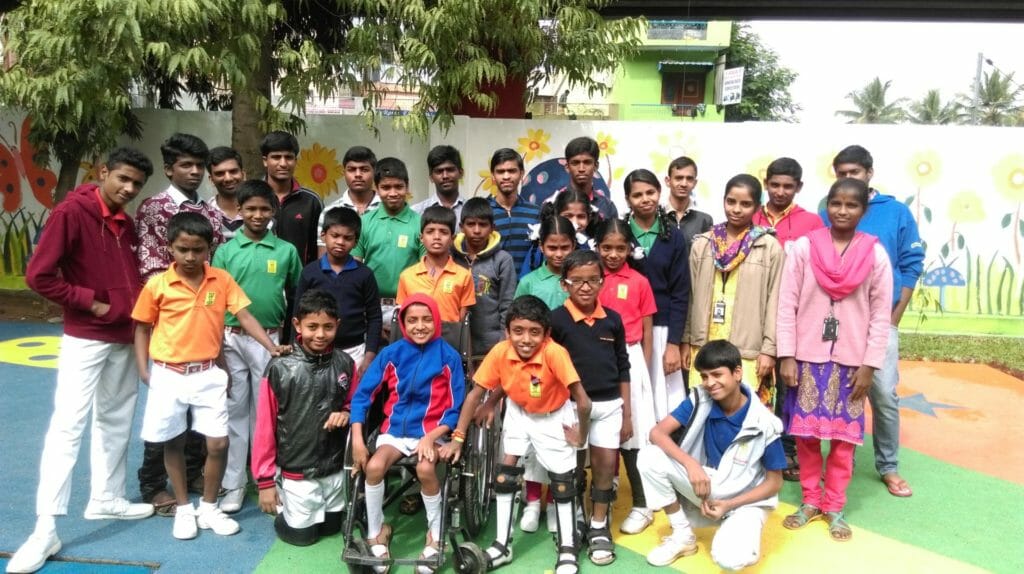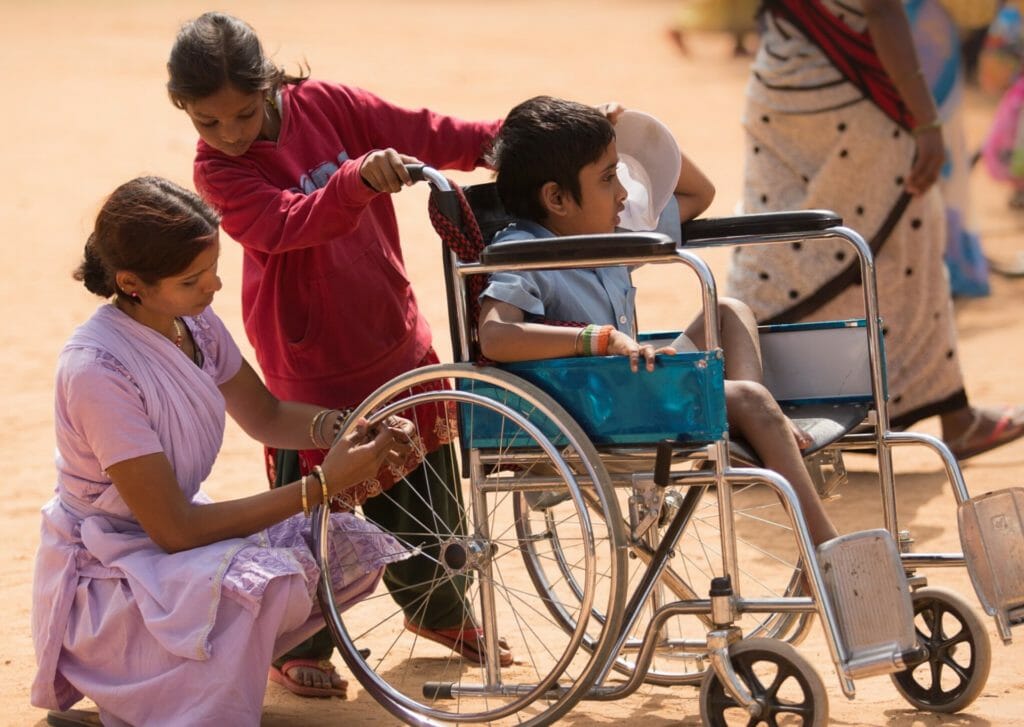Mohammad Irshad, a person with a disability and a native of Bengaluru, when asked about the current state of accessibility for the disabled in the city, said: “I have never been to a public washroom”.
Irshad, diagnosed with a condition called Spina Bifida, where a baby’s spinal cord fails to develop properly, has been a wheelchair user for as long as he can remember. Irshad believes that the lack of accessibility in Bengaluru stems from the fact that the public and policymakers are unaware of the types of disabilities that exist. He believes accessibility for people with disabilities can only be brought about by inclusive thinking by society.
Although Bengaluru is considered a ‘smart city’, it falls short of being considered inclusive, given the lack of infrastructure. While the recent floods and the regular traffic snarls are some obvious indicators, most of the city’s accessibility issues hide in plain sight.
According to the 2011 census, India has approximately 21 million people with disabilities, out of which nearly 13.24 lakh are from Karnataka. In contrast to the 2011 census, where only eight types of disabilities were documented, The Rights of Persons with Disabilities Act (RPWDA) of 2016 classifies 21 disabilities, including cerebral palsy, dwarfism, muscular dystrophy, acid attack victims, hard of hearing, speech and language disability, specific learning disabilities, autism spectrum disorders, and chronic neurological disorders, among others. This relatively new understanding of what disability feels, looks and sounds like is what Irshad initially pointed out. How many of us are even aware of such terms and their meanings?
First thing first, let’s build accessibility
Accessibility is the first step towards inclusivity. In civil society, every individual, regardless of their disability, has the right to access and contribute to building the community. However, due to the frequent failure of private and public parties to adopt inclusive thinking and design in the planning stage, people with disabilities are often not seen in public, resulting in a lack of general awareness.
For example, in 2018, there were over 1,100 public parks in Bengaluru, but only four are accessible to children with disabilities. Even though the government has worked on making more malls, workplaces, and public areas disabled-friendly, most of these places still don’t have full accessibility and are in dire need of repair and maintenance. Here are a few ways to make Bengaluru accessible for individuals with disabilities:
Transport:
Pedestrian access in Bengaluru is a growing concern. While even non-disabled people suffer inconveniences due to the lack of well-maintained footpaths, individuals with disabilities, especially wheelchair users, find these areas to be especially challenging. Apart from this, public transport in the city leaves much to be desired. Most public buses and metros lack ramps and special seats, where people can park with their wheelchairs while travelling. People with crutches face difficulty in boarding high-floor buses.
Under the Accessible India Campaign in 2017, the Ministry of Road Transport and Highways (MORTH) had taken up an initiative to make 25% of the government transport disabled-friendly with foldable ramps, space for wheelchairs, audio-visual announcements, and standard symbols. However, post the timeline, it was found that only 6.6% out of 17,996 buses offering suburban bus services in Karnataka are disabled-friendly.
Read more: A few small steps can make public spaces inclusive for neurodivergent people too
Education:
According to UNESCO‘s “State of Education Report for India 2019 — Children with Disabilities”, Karnataka has over 3.30 lakh children with disabilities, between the ages of 5 and 19. 21.6% of them have never received an education and 15.5% have previously attended, but dropped out of educational institutions.

The primary causes are a lack of qualified personnel, accessible restrooms, and ramps. Due to a dearth of facilities, the majority of schools refuse to enrol disabled children. With schools almost reserving the right on who gets access to basic education, how does one build inclusive thinking at the grassroots, if students remain unaware of diversity?
Diversity in classrooms is a step that will help build a more inclusive generation in the future. Bengaluru’s endeavour toward inclusive education has a long way to go. Diversity should be allowed to flourish and equal access to opportunities ought to be provided to all.
Careers:
In Karnataka, 4% of government jobs are reserved for the disabled. The government also has a 1% reservation set aside for those with disabilities such as blindness, hearing loss, cerebral palsy, acid attack victims, and so on.
Despite this, the opportunities for employment for the disabled are bleak. This is due to the lack of accessible workplaces and unfavourable attitudes of the majority of employers.
Read more: When a disabled child is denied his rights
According to the market intelligence firm Unearth Insight, India has almost 1.3 crore employable people with disabilities. However, only 34 lakh of them have been employed across the organised sector, unorganised sector, government-led schemes or are self-employed.

Working towards an accessible future
An understanding of the need to build inclusive thinking in society is a must. The rights of any citizen, like voting, accessing public health services and utilising transportation services, must be guarded.
The right of a person with a disability to be seen in public is one of the most basic right of citizens. All citizens have the right to get an opportunity to engage and help in the upliftment of society in whichever way their talent provides. As a society, we can help build accessibility from the ground up, by engaging both public and private authorities to build advocacy and accountability that in turn shifts towards policy changes.
Also read:
- How disabled-friendly are Bengaluru’s malls?
- How Bengaluru can build safe, pedestrian-friendly roads
- Interview: Public transport in Chennai far from being disabled-friendly and inclusive
- Can Universal Design be the magic bullet for an accessible Chennai?
- How citizens helped make Dadar Parsi Colony streets disabled friendly
- How do persons with disability feel about public transport in Mumbai?